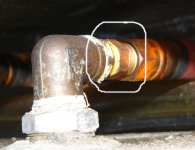knuckle47
Advanced Contributor
In the 5 years or so I have been doing everything to this boat. I have read many topics for which I wonder when these things started AND should mine be "updated" There are too many opinions and the regs read to me at times like a Latin language guide book to Key West
I have re-wired some MAJOR AC/DC elements and the "new" rules call for less than 42" for a type of fuse regarding distances, color codes, etc.stc. and I have followed tthese new requirements to a "T". As I look each season to perform preventive maintenance, I wonder about some things.
I read bout anti-siphon: I am looking for them in our boat simply to take a few precautionary measures. I do not seem to be able to find them. My fuel lines go from the top of the tank, thru a variety of filters and then to the fuel pump and subsequently the carb. Is this still an acceptable method of routing
I have seveal fire extinguishers abord; however, I have this centrally located FIREBOY thing that is either wired to release on temperature rise or continue to reduce my fuel levels from its' weight. It has a little green bubble liquid switch BUT it is probably 25 years old. No idea if it even works. I had found a ticket some OLD papers that Fireboy will re-charge for free....sure in 1985 maybe
Some of my hoses read J2006....my guess is the year 2006...Do newer hoses have 2011 on them or is it sim ply a year that designates a new "standard" in that type of hose?
The last few years has been met with much enjoyed reliability and knowledge secure enough to travel well offshore. Our "systems" are operating properly and servicing things I knew little about 7-8 years ago is a breeze. If this thing was a morotcycle...Whew! Thanks
I have re-wired some MAJOR AC/DC elements and the "new" rules call for less than 42" for a type of fuse regarding distances, color codes, etc.stc. and I have followed tthese new requirements to a "T". As I look each season to perform preventive maintenance, I wonder about some things.
I read bout anti-siphon: I am looking for them in our boat simply to take a few precautionary measures. I do not seem to be able to find them. My fuel lines go from the top of the tank, thru a variety of filters and then to the fuel pump and subsequently the carb. Is this still an acceptable method of routing
I have seveal fire extinguishers abord; however, I have this centrally located FIREBOY thing that is either wired to release on temperature rise or continue to reduce my fuel levels from its' weight. It has a little green bubble liquid switch BUT it is probably 25 years old. No idea if it even works. I had found a ticket some OLD papers that Fireboy will re-charge for free....sure in 1985 maybe
Some of my hoses read J2006....my guess is the year 2006...Do newer hoses have 2011 on them or is it sim ply a year that designates a new "standard" in that type of hose?
The last few years has been met with much enjoyed reliability and knowledge secure enough to travel well offshore. Our "systems" are operating properly and servicing things I knew little about 7-8 years ago is a breeze. If this thing was a morotcycle...Whew! Thanks



